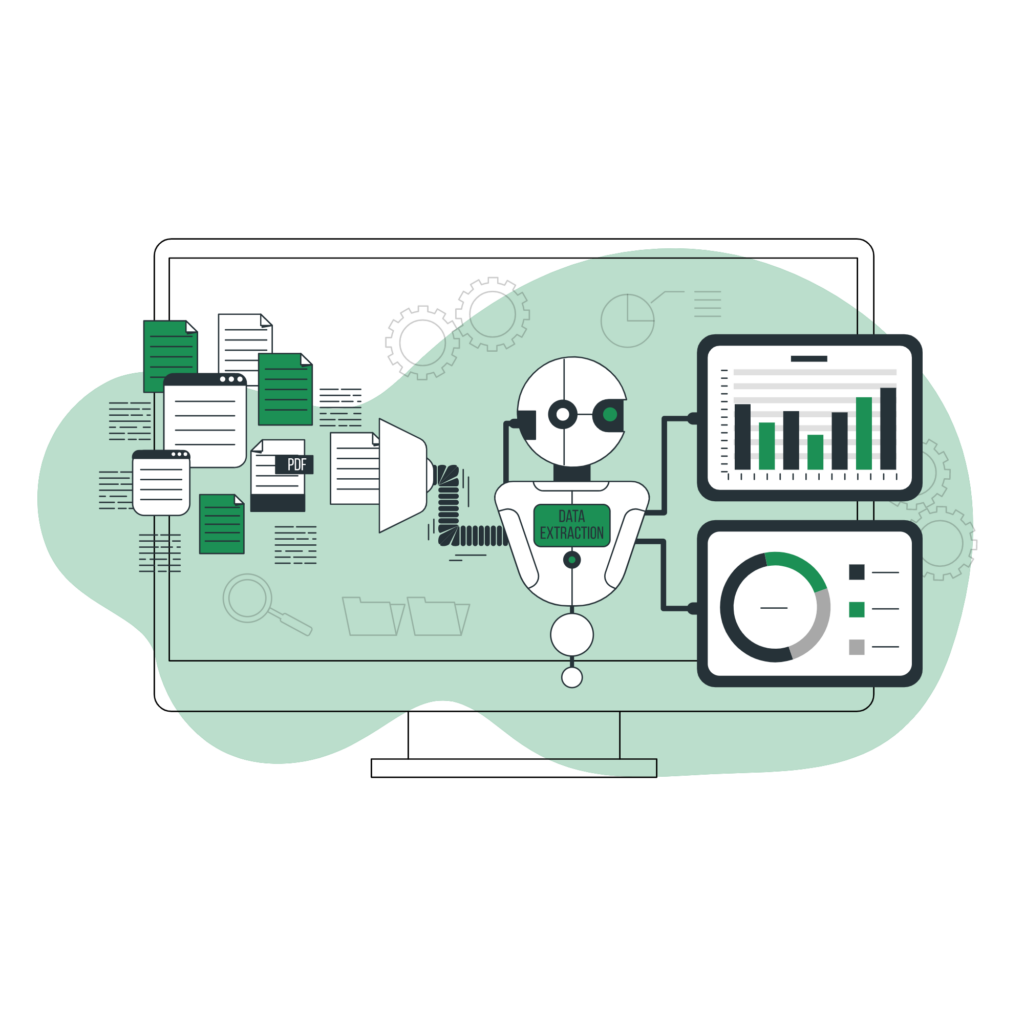Advanced Robotic Process Automation Services
In an era where businesses are constantly seeking new ways to enhance operational efficiency and drive growth, Robotic Process Automation (RPA) has emerged as a game-changing technology.
RPA refers to the use of software robots or digital workers to automate repetitive, rule-based tasks, enabling organizations to optimize their processes and reduce costs.
What Is Robotic Process Automation (RPA)?
Robotic Process Automation (RPA) is a technology that utilizes software robots or digital workers to automate repetitive, rule-based tasks within business processes. RPA is designed to mimic human actions and interact with existing software applications, systems, or user interfaces without the need for complex programming or integration.
RPA helps organizations improve operational efficiency, reduce costs, and minimize the risk of human error by automating manual, time-consuming tasks. Common examples of RPA applications include data entry, invoice processing, customer service, and IT support tasks, among others.

RPA Services vs. Traditional Automation Methods
Traditional automation typically involves custom coding or programming to automate specific tasks, whereas RPA services use software robots (or bots) to automate repetitive, rules-based tasks. RPA services offer several advantages over traditional methods:
- Fast Implementation: RPA services can be implemented much faster than traditional automation methods.
- Lower Cost: RPA is more cost-effective since it doesn't require extensive coding or programming.
- Increased Accuracy: RPA services offer increased accuracy and minimal errors.
- Flexibility: RPA offers greater flexibility since software robots can be easily retrained to perform different tasks.
- Scalability: RPA services are highly scalable and can be easily deployed across multiple machines and environments.
- Improved Compliance: RPA services can help organizations comply with complex regulations and standards since they provide a clear audit trail of all automation activities.
By leveraging RPA services, organizations can automate repetitive tasks, improving productivity and efficiency.
Processes & Industries Benefiting Most from RPA Services
Robotic Process Automation is ideal for transactional processes, such as customer onboarding or payment processing. It can streamline the workflow and increase productivity without adding new staff members or increasing operational costs.
RPA is useful in a wide range of industries, including financial services and insurance. It’s also good for high-value activities like claims processing or customer service calls.
Best Use Cases To Automate Using RPA In 2023
The best use cases for RPA in 2023 include:
- Automating data entry and processing tasks
- Processing payroll every month
- Replacing manual processing across finance and accounting
- Processing invoices and sales orders
- Managing customer service and customer relationships
- Processing recruitment and HR information
Comparing RPA Platforms: Features, Scalability & Ease of Use
How do popular RPA platforms and tools like UiPath, Automation Anywhere, and Blue Prism compare in terms of features, scalability, and ease of use?
Features
UiPath offers a comprehensive set of features that include screen scraping, data manipulation, OCR, and cognitive automation capabilities. It also has pre-built automation components called Activities that can be integrated into workflows.
Automation Anywhere also offers a wide range of features, including process recording, drag-and-drop task building, and a large library of pre-built components called Bot Store. It offers capabilities for advanced analytics and reporting.
Blue Prism provides robust automation, including secure data handling, integration with APIs, and AI-powered automation capabilities. It offers a centralized control room for managing and monitoring automation workflows.
Scalability
UiPath has a strong focus on scalability, with its UiPath Orchestrator component that allows for centralized management and deployment across multiple machines and environments.
Automation Anywhere offers cloud-based deployment options, making it easy to scale up to meet growing demands.
Blue Prism is designed with scalability in mind, with its Blue Prism Digital Exchange offering a large library of pre-built automation components that can be integrated into workflows. Its architecture supports multi-tenant environments, allowing for deployment across multiple departments and teams.
Ease of Use
UiPath is a user-friendly interface with drag-and-drop automation capabilities, making it easy for non-technical users to create and manage automation workflows.
Automation Anywhere also has a user-friendly interface and a visual task-building approach, making it easy for users to manage workflows without coding skills.
Blue Prism has a code-based approach, which may require more technical skills to manage automation workflows. However, it does offer training and certification programs to help users develop the skills needed.
Steps & Best Practices For Implementing RPA
First, you need to identify the right processes to automate. The best way to do this is by using a process mapping tool to identify bottlenecks and determine which actions can be automated.
Process mapping sounds complicated but isn’t. Our experienced team can help you create a visual representation of your organization’s workflows (a process map), outlining the steps involved in every process.
Once you’ve identified the right processes, you’ll be able to calculate the case for RPA implementation by determining how much money you’ll save over time.
When you’ve created your pilot project, you need to look at risk mitigation. If there are risks involved, there are several ways to minimize them including implementing a monitoring system and ensuring employees know what to expect.

Addressing RPA Implementation Challenges & Risks
Here are some of the challenges and risks associated with RPA implementation and how you can mitigate them:
Process Selection
Selecting the right process for automation is a critical factor for success. Not all processes are suitable for automation, and some may require more time and resources to automate than others. A thorough assessment of your processes will help to maximize the benefits of RPA implementation while minimizing the risks.
Change Management
RPA implementation can bring significant changes to an organization’s processes and there may be resistance to change, and employees may feel threatened by the potential loss of jobs. Where possible, involve your employees in the RPA implementation process from the beginning and communicate the benefits of automation.
Data Security
RPA implementation involves accessing sensitive data, which can pose a risk to security. Strict access controls and authentication mechanisms are needed, as are encryption and secure data transfer protocols.
Governance and Compliance
RPA implementation can raise governance and compliance concerns, especially in regulated industries. Establish clear policies for implementation and make sure they comply with all regulations and standards. Conduct regular audits to check for compliance.
Scalability
Invest in a scalable RPA platform that can manage and deploy automation workflows across multiple machines and environments.

Artificial Intelligence (AI) & Machine Learning (ML) in RPA's Future
AI and ML are important for RPA services. They can also be used to manage robotic process automation projects more effectively. For example, you could use AI and ML to analyze historical data sets related to production processes.
Our Automation Tool Capabilities









USA
Experience quality assurance with our expert QA Testing Services in the USA.

UK
Elevate your software quality with our tailored Software QA Testing Services in the UK.

Ireland
Quality assurance for your software made easy with our experienced Software QA & Testing Services in Ireland.
Our Key Clients
Let us assess your RPA Needs
The latest testing automation solutions from CelticQA can help you deliver projects on time, within budget and with zero defects.
Atlanta, USA
MON – FRI: 9 AM to 5 PM
Dundalk, Ireland
MON – FRI: 9 AM to 5 PM